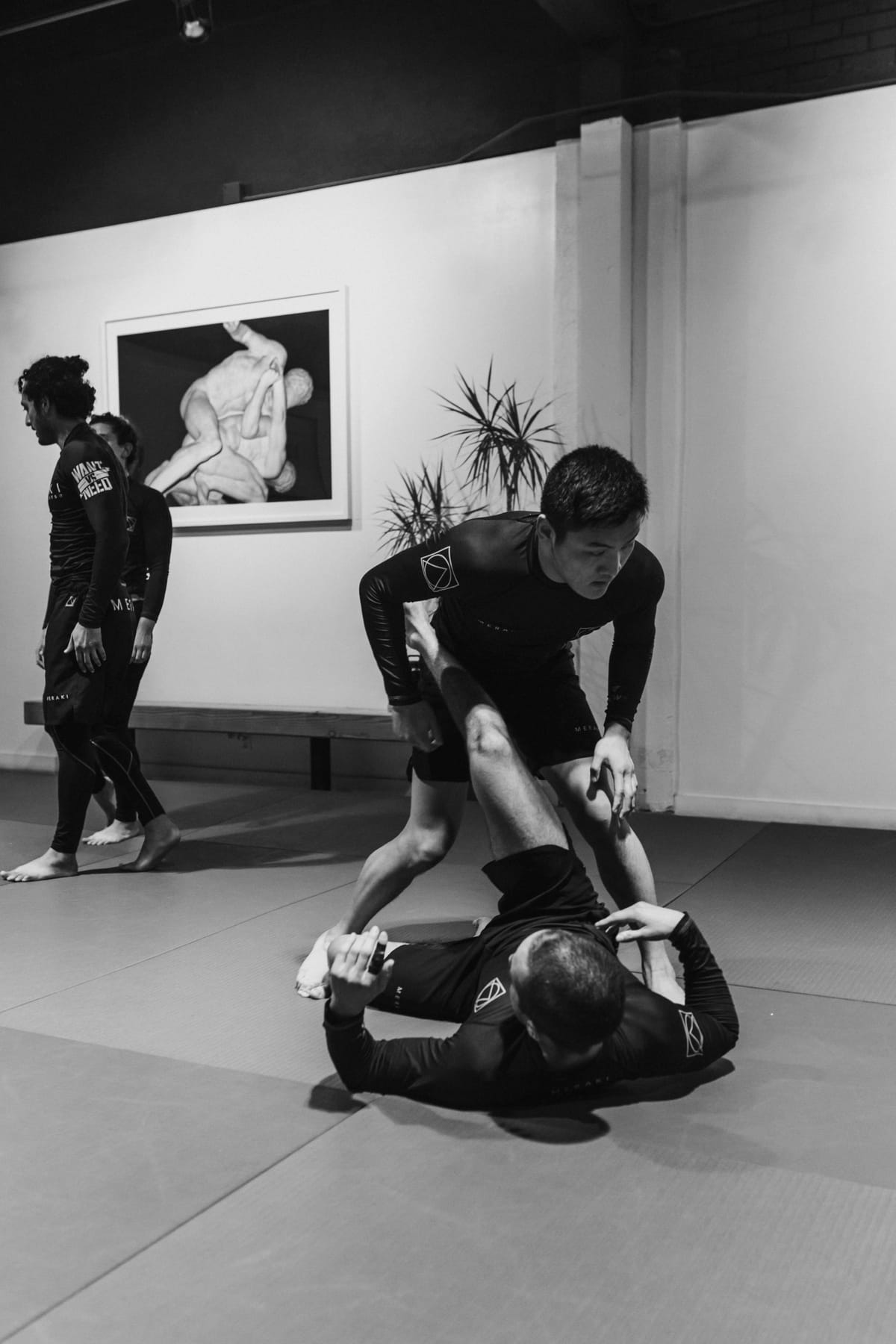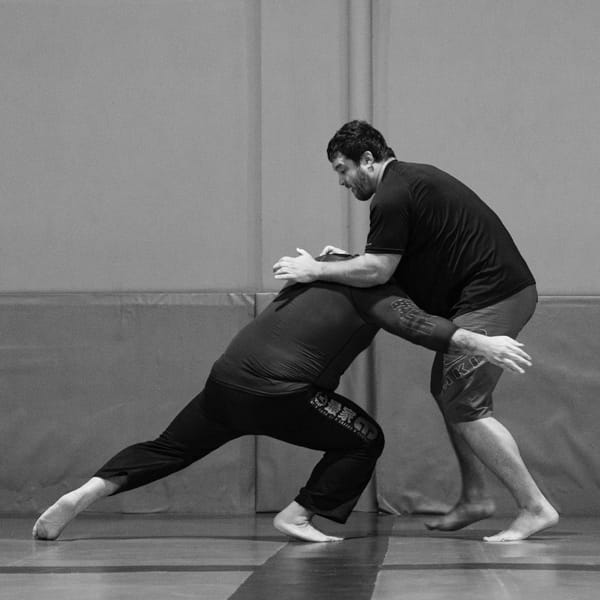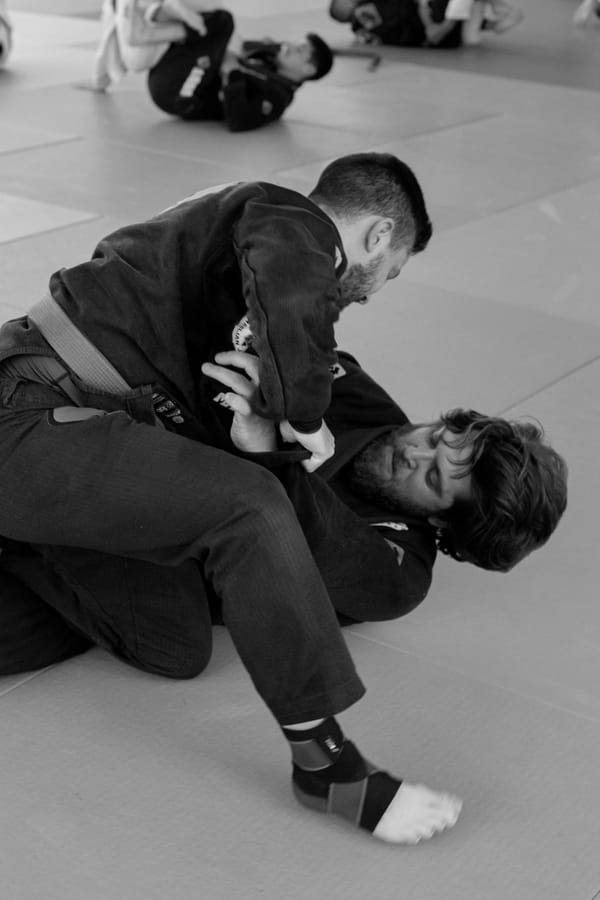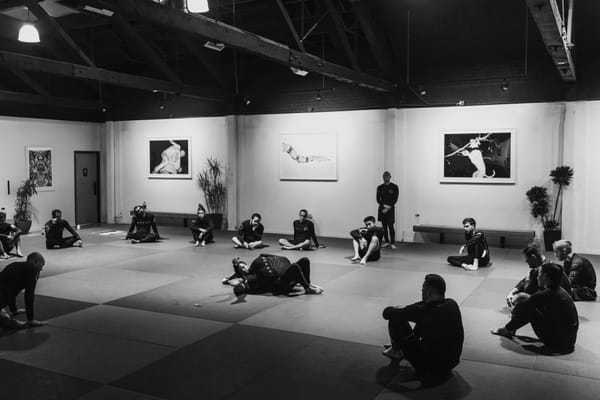First Forays into Ecological Training

In this post I'm going to talk about why ecological grappling is interesting to me and start discussing how I've been trying to use it in my lessons here in Fiji.
Let's start by acknowledging that it's hard to define what ecological training actually is when it comes to jiujitsu or grappling (I'm going to use grappling throughout this blog). Most people don't really know a lot about this training methodology, and the person who seems to know the most, is Greg Sauders, so at the moment ecological grappling is what he seems to be teaching (or preaching). What Greg does that catches people's attention in my opinion, is say that he doesn't show technique, his classes are a series of live sparring situations with tasks and constraints. This leads to people saying "so it's positional sparring? That's not new" and while I have thoughts on that (no it's not positional sparring), those will come out later on, as I learn more and as I understand more, but for now I want to focus on why this version of ecological grappling attracted me.
As I said before I have been travelling for the past 3 years to pretty remote places. This meant that I didn't have many opportunities to train and that when I did, it was with white, blue, purple belt level practitioners. I'll be honest with you, I do not think my grappling ability has improved recently, I'm quite certain I was a better grappler in 2018/19 than I am now. However it's really hard to know because I don't train regularly with people of a similar skill level to me. Dropping into academies that were run by instructors with 3-5 years of experience, is quite a tedious experience. I might come off as an asshole saying that, but I mean no disrespect to those instructors, they are doing something really hard and they live in places where they didn't have access to more experienced instructors to learn from. If you are still judging me, try to imagine asking a 3 stripe blue belt at your academy to run class for you, funny experience, but then make that the only way you train for the next 10 sessions... it becomes less fun.
I am a person that likes improving. I love grappling because of the way it allows us to study a problem, and solve that problem, but what to do if you never face a problem in grappling? I don't mean never, sometimes I would visit an academy with high level people who would beat me, and I would stay around for 1 or 2 weeks having good rolls and improving, before moving on. 90% of the time though, I was rolling with people who presented very little problem to me in sparring.
How do I get better?
I came up with a strategy, a quite obvious one. I would set myself goals to learn new techniques and try them on my opponents during sparring. For example, I've always wanted to have a better butterfly guard, so when I arrived in Fiji, I started watching Adam Wardziński's instructionals (paid for this time, not a cheap student bum anymore) and when sparring happened I would only try to play butterfly guard. One obvious problem with this strategy is that it's an inefficient use of my time. One class would be a 15 minutes warm up, hip escape number 10,383 of my life, followed by learning the scissor sweep and the key detail or adjustment that the instructor wants to show me while drilling. I'm grateful, but honestly pal, I have not attempted a scissor sweep in sparring since before you started training, however good the detail is, it probably won't change that situation. Then after a few more techniques over the course of an hour, we finally come to live sparring and I get 15 minutes to try and improve my butterfly guard.
Please don't misunderstand me and think I'm saying no one can show me technique that will help me improve. I'm saying that after a certain level, you have your game and you know what you want or need to improve. My case is extreme, because I don't have a home academy and I'm not visiting established high level academies, but in many respects, unless you are a talented prospect, everyone is responsible for their own improvement in this sport, especially after blue belt. Which makes the traditional model kind of crazy for everyone, right? You decide that you need to improve passing, and the instructor announces that you'll be working on the DLR guard for the next two weeks. And that's an improvement over instructors that decide to show random techniques from one day to the next.
The second problem with this method of trying to improve is that most of us are not disciplined enough and our egos are too big. You know what I'm saying, you get the blue belt who's 20kg lighter than you and guess what, your butterfly guard works a charm, you are the sweep king, Warzinski, but more handsome and with a better vocabulary.
Then you match up with someone who is your level and one of two things happen. Either ego gets in the way, and you bring out your A game. Can't let this son of a bitch smash pass my pathetic butterfly guard! Or you remain principled, the son of a bitch smashes past your pathetic butterfly guard and you spend the next 4 minutes fighting for your life trying to stop the mother fucker mounting you and making you his bitch in front of everyone else who's definitely watching. Ego, am I right? I guess the most efficient thing in that situation is to get smashed, quickly give up the tap so you can return to butterfly guard and try one more time, but that's a bit weird for your partner.
Ecological training, the promised land
When I saw someone was running a class where they did only 'positional' sparring type exercises and no drilling, it seemed like the answer to all my dissatisfaction. Maybe I wouldn't be solving problems that I found difficult all of the time, but at least I'd be rolling the all of the time, and not mindlessly drilling techniques. I started investigating what ecological training meant and what a constraints led approach was. One of the first videos I watched was by Tyler Spangler and he said something that got me even more excited.
Safe leg lock defence practice
16 years in and I still don't know much about leg lock defence. Either I am good enough to stay away from leg entanglements with my partner, or if they can entangle me, I tap immediately because I don't know what the hell I'm doing and I've seen too many:
He turned the wrong way...
Situations. Which is all good brother, except now I have to go get surgery because I turned the wrong way, and you were not skilled enough to train with your partners safety in mind.
These were the reasons I decided to investigate and implement ecological grappling at my new academy.
Where are the resources?
I started looking for resources. This was one of the first videos I watched:
In this video, Greg helps Josh Beam (blue belt YouTuber) design a game to help him with his half guard passing, and then design a game around triangles for two beginner students. I think this video gave me a few ideas for those specific positions and also showed Greg's ability as a coach to help his students improve without simply telling them, do this, do that.
Next I commented on a photo of a stack of books Greg had posted on Instagram with the caption:
If you want to know, it takes work. It takes more than memes and a google search. Assume you’re wrong. Ask questions. Read. Apply. Still assume you’re wrong. Wash. Rinse. Repeat. #standardjiujitsu
And I saw that he was responding to almost every comment, so I asked:
Hi Greg, what would be first 3 books to read if someone had been training 15 years, was opening a gym and wanted to adopt an ecological approach?
He gave me the 3 books and I've started reading and taking notes. A future post will be on the first book with the notes I made.
Finally I tried the memes and google search route. I was trying to teach open guard to my students. About half of my students are completely new to grappling and half have some level of experience. I tried this search:
"open guard ecological games"
I found this video.
In this video, the game is to pass the open guard, and the constraint is to do so without using your hands, constrained by keeping them behind your back. I am still learning, but I don't think this is game constitutes a constraints led approach. Firstly, one thing that I've seen Greg say multiple times, is not to use domain specific jargon. Maybe I have 'advantage' of having a new academy with students completely new to grappling, so I know if I gave them the 'task' of 'passing the guard' they'd look at me in bewilderment. I decided to give movement tasks that were simple to understand whether you'd tried to pass a guard before in your life or not.
My Games
Game 1
- Bottom Player: Keep both feet inside the legs of standing player.
- Top Player: Try to step both feet to one side of bottom player's feet and step past their knee line.
Game 2
- Bottom Player: Keep both feet inside the legs of standing player.
- Top Player: Try to step one foot in between bottom players feet and one outside.
In these games, I am trying to help my students understand the importance of inside feet position when passing guard. Something that I literally never thought about until I saw a video of Danaher talking about how important it is around 2017. With the traditional method of teaching, I had reached brown belt level in Brazilian jiujitsu, and I'd never even thought about inside position of the feet. I am sure some instructor must have mentioned this concept in passing while demonstrating a pass or a sweep, but without it clearly emphasised, I didn't realise how important it is. Now that I know it, every single roll I ever do, I am thinking about and fighting over inside feet position. The same is probably true for a number of concepts, hand fighting, back exposure etc.
Constraining To Amplify Errors
I read about the concept of constraining to amplify errors in Rob Gray's How We Learn To Move (the first recommendation from Greg 📚). An example Rob gives in his book for this kind of constraint is in golf.
In a study movement scientists took a group of amateur golfers who all had a problem of not shifting their weight to their back foot while hitting a ball. These amateurs were split into 3 groups: 1 group was given an hour of practice hitting the ball with a traditional coach who told them to shift their weight onto the back foot. 1 group was given no coaching (control group). The final group was given a task constraint, they had to spend the time hitting the ball while putting their weight as much as possible on their front foot. After the training session the scientist retested the golfer's swings, the group with a negative constraint significantly improved their technique, while the other two groups showed no significant improvement.
The point of negative constraints is to amplify subtle or small sources of error in technique, so that the athlete can identify them themselves and eliminate them. Going back to the game I found on YouTube, it is possible that the constraint of not using hands while passing was to show students that arms and hands are useful in passing. I wouldn't consider this a subtle source of error, however most beginners do not use their arms and hands enough when passing. I decided to try and a different negative constraint to one of my previous games to highlight another common error I see in people playing open guard.
Game 1a
- Bottom Player: Keep both feet inside the legs of standing player (task). You are not allowed to sit up (constraint).
Game 1b
- Bottom Player: Keep both feet inside the legs of standing player (task). You must stay sitting up as much as possible (constraint).
I hoped that these two games would show my students that it is much harder to maintain inside position while lying on your back in open guard. Interestingly one student said he found it easier while lying on his back. I don't know what this means, if he's an anomaly, or if the game wasn't well designed, or maybe my hypothesis about sitting up vs. lying down isn't true for everyone. Either way, there are times when you will have to fight for inside position when you can't sit up in open guard.
Kit Dale
One final resource I found was this video by Kit Dale
It seems Kit has also been using the constraints led approach for a while, although it's not clear to me if he's done much reading on it, or developed these ideas on his own. I did not buy his course. Anyone who has, I'd be interested to know what you think of it.
Conclusion
This is the end of my first post. Please remember I'm still learning, all of this could be wrong. I know that as humans, we prefer when people tell us confidently how to solve our problems, like the omniscient John Danaher does so verbosely, but I am not that person. Use your own judgement, maybe you can improve on my games, or come up with better ones.


